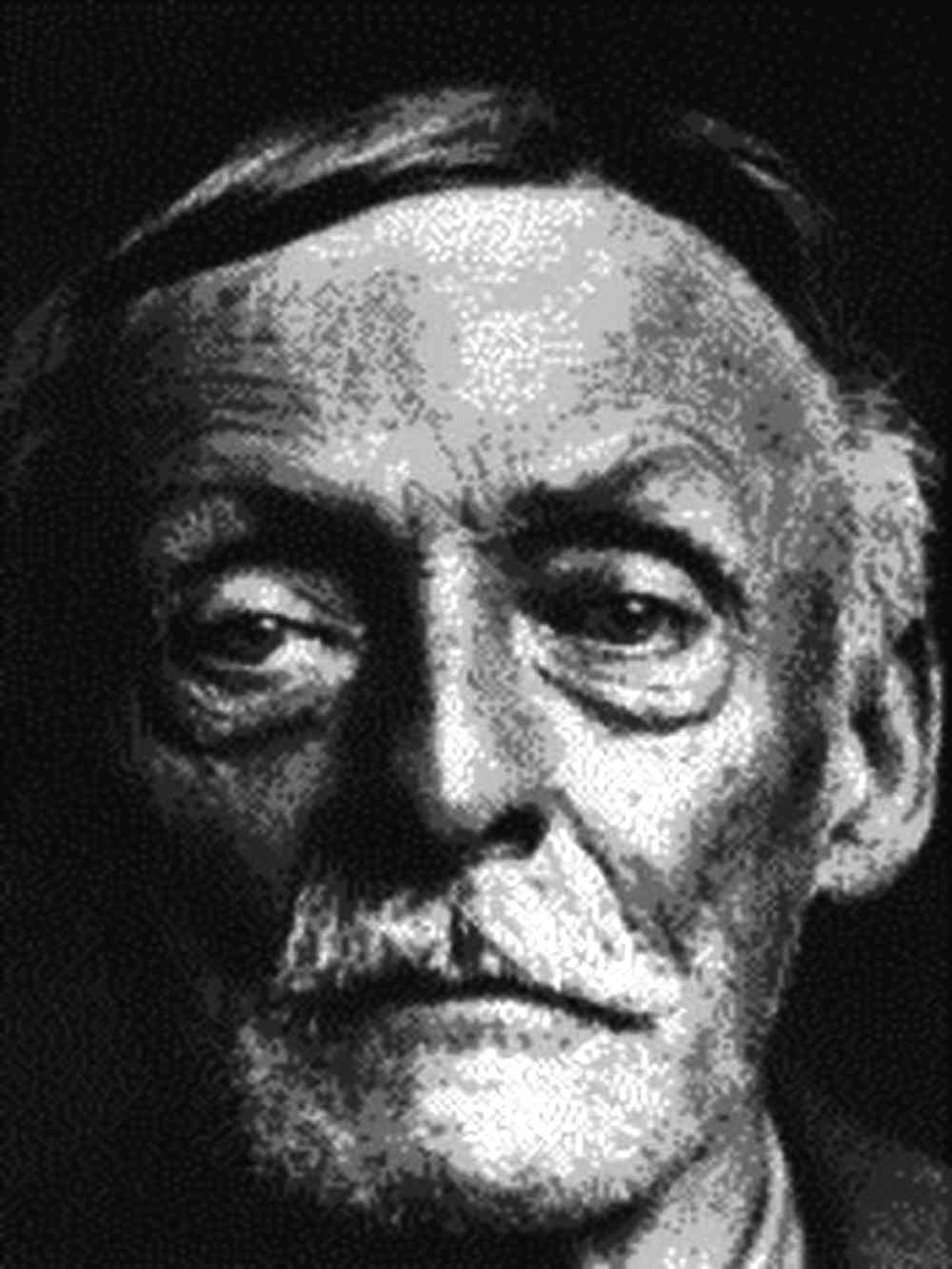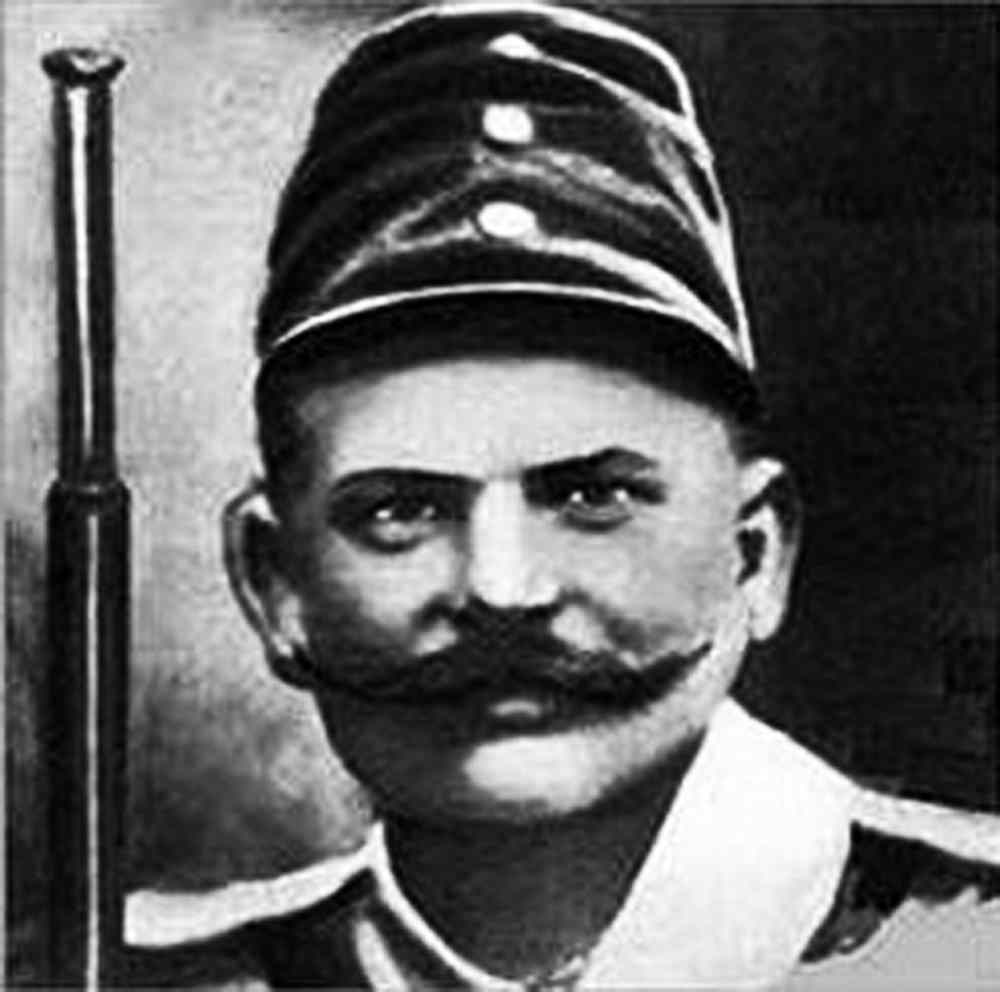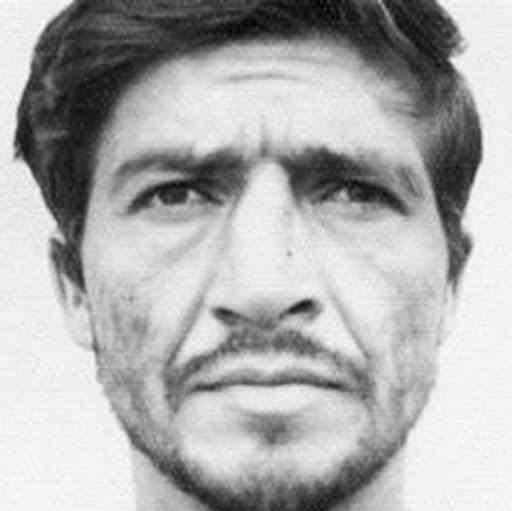There are many real life murderers who are in fact quite a bit more over-the-top than even the cheesiest B-movie bad guys. Read more below following on from our first post of some of the worlds most notorious, bizarre and brutal serial killers. Let us know what you think in the comments box provided below!
KATHERINE MARY KNIGHT-
Katherine Mary Knight was born on the 24th October 1955, New South Wales, Australia. She is the first Australian woman to be sentenced to life imprisonment without parole due the convicted murder of her partner, John Price. She is currently detained in Silverwater Women’s Correctional Centre.
Katherine was the younger of twins born to Ken Knight and Barbara Roughan. Her father was an alcoholic who openly used violence and intimidation to rape her mother up to ten times a day. Her mother, in turn, often told her daughters intimate details of her sex life and how much she hated sex and men.
Knight claims she was frequently sexually abused by several members of her family (though not by her father), which continued until she was 11. Apart from her twin, the only person Knight was close to was her uncle Oscar Knight. She was devastated when he committed suicide in 1969 and continues to maintain to this day that his ghost visits her.
Katherine left school at 15, and at 16 started work cutting up offal at the local abattoir from where she was quickly promoted to boning and given her own set of butcher knives. At home, she hung the knives over her bed so that they be available if she needed them. A habit she continued everywhere she lived, until her incarceration.
Knight married a nice hard-working man called David Kellett in 1974, at her request, and completely dominated him. On their wedding night, Katherine tried to strangle David, later explaining it was because he feel asleep after only having intercourse three times. The marriage was particularly destructive and unable to cope with Knights violent and possessive behavior, in May 1976, after the birth of their first child, Kellett left her for another woman and moved to Queensland. Shortly after this Knight was diagnosed with postnatal depression, placing two-month-old Melissa on a railway line shortly before the train was due. Luckily an old man who was foraging near the railway line, found and rescued Melissa, by all accounts only minutes before the train passed.
After another daughter by Kellett, Knight met 38-year-old miner David Saunders in 1986. The violence from Katherine continued and in May 1987, she cut the throat of his two-month-old dingo pup in front of him, for no other reason than as an example of what would happen if he ever had an affair. After giving birth to her third daughter Sarah in June 1988 she hit Saunders in the face with an iron before stabbing him in the stomach with a pair of scissors after an argument, prompting him to move back to Scone.
In 1990, Knight became pregnant by 43-year-old former abattoir co-worker John Chillingworth, and gave birth the following year to a boy they named Eric. Their relationship lasted three years before she left him for a man she had been having an affair with for some time, John Price.
John Price was the father of three children when Knight had an affair with him. In 1998, a spiteful Knight got Price fired from the job he had held for 17 years and that same day, he kicked her out. A few months later, Price restarted the relationship although now refused to allow her to move in with him. After a violent attack from Knight one morning, Price told his co-workers that if he did not come to work the next day, it would be because Knight had killed him. With his children at friends, he spent the evening with his neighbors before returning home and going to bed at 11pm. Knight later arrived while he was sleeping, woke Price and they had sex, after which he fell asleep.
At 6am the next morning a neighbor noticed blood on the front door of Price’s home and alerted the police, who arrived at 8am. Breaking down the back door, police found Price’s body with Knight comatose from taking a large number of pills.
Price’s autopsy revealed that he had been stabbed at least 37 times, with many of the wounds extending into vital organs. Several hours after Price had died, Knight skinned him and hung his skin from a meat hook on the door to the lounge room. She then decapitated him and cooked parts of his body, serving up the meat with baked potato, pumpkin, zucchini, cabbage, yellow squash and gravy in two settings at the dinner table. She had placed notes beside each plate, each having the name of one of Price’s children on it; she was preparing to serve his body parts to his children.
Knight pleaded guilty and was sentenced to life in prison with no possibility of parole. Her papers were marked “never to be released”, the first time that this had been imposed on a woman in Australian history.
ALBERT FISH-
Born Hamilton Fish, in 1870, America’s most notorious 20th-century cannibal was the product of a respected family living in Washington, D.C.
Albert Fish was five years old when his father died, and his mother placed him in an orphanage while she worked to support herself. Records describe young Fish as a problem child who “ran away every Saturday,” persistently wetting the bed until his eleventh year. Graduating from public school at age 15, he began to call himself “Albert,” discarding his hated first name.
In 1898 he married a woman nine years his junior, fathering six children before his wife ran away with a man named John Straube. She came back with Straube in tow, and Fish took her back on the condition that she send her lover away. He discovered sometime later that his wife was keeping Straube in the attic and she departed after a stormy argument, never to return.
By his own account, Fish committed his first murder in 1910, killing a man in Wilmington, Delaware. His children began to notice their father’s stranger behavior as he would shake his fist at the sky and repeatedly scream, “I am Christ!” Fish was obsessed with sin, sacrifice, and atonement through pain, encouraging his children and their friends to paddle him until his buttocks bled. He also developed a growing obsession with cannibalism, often preparing himself a dinner consisting solely of raw meat, and would sometimes serve it to his children.
On his own, he inserted numerous needles in his groin, losing track of some as they sank out of sight. (A prison X-ray revealed at least 29 separate needles, some eroded with time to mere fragments). He also slipped needles under his own fingernails and on other occasions, would soak cotton balls in alcohol, insert them into his anus, and set them on fire.
Around 1919, at the age of 41, during his stay in St. Louis, Fish began sexually molesting an intellectually disabled man named Kedden. He attempted to mutilate the 19-year-old with a pair of scissors. After this, Fish then increased the frequency of his visits to brothels, where he engaged in sadomasochism.
Though never divorcing from his first wife, Fish married three more times, enjoying a sex life which court psychiatrists would describe as one of “unparalleled perversity” from such acts like coprophagia – consumption of human excrement.
Also known as the Gray Man, the Werewolf of Wysteria, the Brooklyn Vampire, the Moon Maniac and The Boogey Man, Fish was a child rapist and a cannibal. Boasting that he had “had children in every state” and was ordered “by God” to castrate young boys. Albert Fish tortured, mutilated and murdered both sexes of young children with his ‘implements of Hell’: a meat cleaver, butcher knife, and a small handsaw.
Obscene letters were another of his passions, and Fish mailed countless examples to strangers, their addresses obtained from matrimonial agencies or newspaper “lonely-hearts” columns.
In 1928, posing as “Mr. Howard,” Fish befriended the Budd family in White Plains, New York. On June 3, while escorting 12-year-old Grace Budd to a mythical children’s party, he took the child to an isolated cottage and there dismembered her body, saving several pieces for a stew which he later consumed.
Two years later, with the Budd case still unsolved, Fish was confined to a psychiatric hospital for the first time. After two months of observation, he was discharged with a note reading: “Not insane; psychopathic personality; sexual type.” In 1931, after arresting Fish once more on a charge of mailing obscene letters, police found a well-used cat-o’-nine-tails in his room. He was released after two more weeks of observation in a psychiatric ward.
Compelled to gloat about his crimes, Fish sent a letter to the Budd Family in 1934 detailing how he killed and ate their daughter.
Traced by police through the letter, Fish readily confessed to other homicides, including children killed in 1919, 1927, and 1934. At trial, Fish was sentenced to die and was electrocuted at Sing Sing prison on January 16, 1936. It took two jolts before the chair, short-circuited by all the needles Fish had planted in his body, could complete its work.
BELA KISS-
Béla Kiss (pronounced Kish) was born in 1877 in Hungary.
Kiss was a rather handsome man with blond hair and remarkable, vibrant blue eyes. He earned his living as a tinsmith and was 37-years-old when he was called into the armed services in 1914.
Not only had Kiss taught himself his trade as a tinsmith, but he was a voracious reader and was highly conversant on art, literature and history. An amateur astrologer and allegedly fond of other occult practices, although he had no formal schooling at all, he was able to discuss virtually any subject with the most intelligent and educated of the town’s people.
Czinkota (then a town near Budapest, now a neighborhood within the city itself) had a limited choice of female companions, so Kiss kept an apartment in Budapest and took out advertisements in newspapers there. Women began corresponding with Kiss, but not eager to marry quickly, Kiss hired an elderly woman, Mrs. John Jakubec, as a housekeeper to perform the domestic duties that a wife would normally do.
Town gossips noted that over the years a steady stream of lovelies from Budapest spent short periods of time at Kiss’s home, but no one in the town, not even Mrs. Jakubec, was introduced to these young women who came and went so quickly.
Dr. Charles Nagy, Detective Chief of the Budapest Police, received an alarming call in July 1916, from a Czinkota landlord who had found seven large metal drums that were so heavy he couldn’t move them. The town constable had remembered Kiss’ stockpile of gasoline, and led needy soldiers to the barrels. Upon attempting to open the drums, a suspicious odor was noted. Detective Chief Charles Nagy took over the investigation and opened one of the drums, against the protests of Mrs. Jakubec, discovering the body of a strangled woman. The other drums yielded similarly gruesome content and a search of Kiss’ house resulted in a total of 24 bodies.
Nagy informed the military that they should arrest Béla Kiss immediately, if he was still alive, though the name, unfortunately, was very common. Nagy also arrested the housekeeper, Mrs Jakubec and asked the postal service to hold any possible letters to Kiss, in case he had an accomplice that could warn him.
Jakubec assured police that she knew absolutely nothing about the murders. She showed them a secret room Kiss had told her never to enter. The room was filled with bookcases and a desk that held a number of letters, Kiss’ correspondences with 74 women and a photo album. Many of the books were about poisons or strangulation.
After the detectives arranged for a mortician to collect the victims found in the metal drums, they began a search of Kiss’s home and the grounds around it, finding even more bodies that had been buried. Each victim, even those that had been buried, had been pickled in alcohol to be preserved. The bodies were still recognizable and could be easily identified if they had some names with which to work. Police also found that the bodies had puncture marks on their necks and their bodies were drained of blood. This led them to believe that Kiss was some kind of vampire.
Faced with the biggest case of his career, Det. Chief Charles Nagy took some immediate steps. First, he notified the military that Bela Kiss, if he were still on the front, was to be arrested immediately.
On October 4, 1916 Nagy received a letter that stated that Kiss was recuperating in a Serbian hospital. Nagy arrived too late — Kiss had fled and substituted a dead body of another soldier in his bed. On several later occasions, speculation arose that Kiss had perhaps faked his death by exchanging identities with a dead soldier during the war. He was supposedly sighted numerous times in following years and there were various rumors about his fate, including that he had been imprisoned for burglary in Romania or he had died of yellow fever in Turkey. There were also rumors that Kiss was living in the city and working as a janitor but they could not be verified. When the police went to interview the janitor, the janitor had already gone.
Kiss’ eventual fate and exact number of victims still remains unknown today.
GARY RIDGWAY-
Gary Ridgway was born on the 18th February in Salt Lake City, Utah, 1949. He is an American serial killer also known as the “Green River Killer”.
Relatives of Ridgway described his mother as domineering and that young Gary witnessed more than one violent argument between his parents. Ridgway was tested with an IQ test in his younger years and resulted at 82 which is regarded as below average intelligence.
When he was 20, Ridgway stabbed a six-year-old boy after leading the boy into the woods and stabbing him though the ribs and into his liver. According to the victim who survived, and Ridgway himself, Ridgway walked away laughing and saying, “I always wondered what it would be like to kill someone.”
At age 21, Ridgway married his high school girlfriend Marcia Winslow. He joined the Navy and was sent to Vietnam. During his time in the military, Ridgway began spending a lot of time with prostitutes and contracted gonorrhea. This angered him, but he continued to have unprotected sex with prostitutes. Meanwhile his wife, alone and 19 years old, had an extramarital affair, and the marriage ended within a year.
His first two marriages resulted in divorce because of infidelities by both partners and according to the women in his life, Ridgway had an insatiable sexual appetite. Ridgway had also become religious during his second marriage, proselytizing door-to-door, reading the Bible aloud at work and at home, and insisting that his wife follow the strict teachings of their church pastor. Ridgway continued to solicit the services of prostitutes during this marriage; he also wanted his wife to participate in sex in public and inappropriate places, sometimes even in areas where his victims’ bodies were later discovered.
Ridgway himself admitted to having a fixation with prostitutes, with whom he had a love-hate relationship. He frequently complained about their presence in his neighborhood, but he also took advantage of their services regularly.
Throughout the 1980s and 1990s, Ridgway is believed to have murdered at least 71 women (according to Ridgway, in an interview with Sheriff Reichert in 2001) near Seattle and Tacoma, Washington. His court statements later reported that he had killed so many, he had lost count. A majority of the murders occurred between 1982 and 1984.
Most of the bodies were dumped in wooded areas around the Green River, except for two confirmed and another two suspected victims found in the Portland, Oregon area. The bodies were often left in clusters, sometimes posed, and usually nude. Ridgway would often return to the dead bodies to have sexual intercourse with them.
Ridgway later confessed that he talked to and tried to make his victims comfortable before he committed the murders. In his own words, “I would talk to her… and get her mind off of the sex, anything she was nervous about. And think, you know, she thinks, ‘Oh, this guy cares’… which I didn’t. I just want to, uh, get her in the vehicle and eventually kill her.”
In another later statement Ridgway said that murdering young women was his “career”.
The precise number of woman killed to this day remains unclear and it is believed to be much higher than initially estimated.
In November 30, 2001, as he was leaving the Renton, Washington, Kenworth truck factory where he worked Gary Ridgway was arrested for the murders of four women whose cases were linked to him through DNA evidence. As part of a plea bargain wherein he agreed to disclose the whereabouts of still-missing women, he was spared the death penalty and received a sentence of life imprisonment without parole.
PEDRO LOPEZ-
Pedro Alonso López was born the 8th October in 1948 in Colombia.
The son of a penniless prostitute, Pedro was the seventh of 13 children, and his early years could be described as anything but joyous. His mother was an overbearing woman who dominated her children with an ironclad fist. Regardless of his home life, anything was better than being out on the mean streets he was growing up in. Human rights violations by the guerrillas, paramilitaries, and members of the national armed forces were commonplace, and the country’s crime rate was fifty times higher than all other countries in the world.
In 1957, at the age of eight, Pedro’s mother caught him having sexual relations with his younger sister and his worst nightmare became a reality — he was exiled to the streets and ordered never to return home again. As bleak as the situation appeared, things quickly began to look up when an older man picked him up off the streets, and offered him food and a place to stay. Pedro could not believe his luck and quickly accepted the offer in blind faith. Nonetheless, it was in fact too good to be true. Instead of being taken to a plush home with food and bedding, the man took Pedro to an abandoned building, where he sodomized him numerous times before tossing him out onto the cold hard streets.
Following his traumatic experience with the older man, Pedro became terrified of strangers. He slept in alleyways and deserted buildings, and would only wonder around out at night in search of food from trash cans and local dumps. After days of begging and scavenging dumpsters, a resident American couple approached him, distressed by Pedro’s skeletal appearance and heartbroken watching him beg for food. They provided him with a warm meal and asked him to come live with them. With little other choices left, Pedro accepted their offer and went home with the couple. He was provided with free room and board and eventually enrolled in a day school for orphans but in 1963, at the age of 12, a male teacher sexually molested him. All of Pedro’s previous fears were reborn and anger grew within him. Following the incident, he stole money from an office in the school and ran away.
Pedro had never been skilled in any trade and held only a minimal education. He spent the next six years of his life begging for food and committing petty thefts in order to survive. He was a very proficient car thief and was looked up to by younger apprentices of the trade.
In 1969, 18-year-old Pedro was arrested by authorities for car theft and sentenced to serve seven years in prison. He served just two days behind bars before being brutally gang-raped by four older inmates. Following this most recent attack, Pedro swore to himself that no one would ever touch him again. In retaliation, he fashioned a crude knife from prison utensils and spent the following two weeks getting his revenge by individually murdering each of the four men that had raped him. Authorities deemed the murders self-defense, and simply added an additional two years to Pedro’s initial sentence for the car theft.
Upon his release from prison in 1978, Pedro traveled widely throughout Peru. It was during this time that he later claimed to have begun stalking and killing at least 100 young girls from various Indian tribes throughout the region.
It is known that he was captured by a group of Ayacucho’s, in northern Peru, while attempting to kidnap a nine-year-old girl. The Indians stripped and tortured Pedro for hours before deciding to bury him alive. An American missionary intervened and convinced his captors that murder was ungodly and that they should turn Pedro over to the proper authorities. They reluctantly agreed and remanded their prisoner over to the Peruvian authorities, but not wanting to waste time investigating petty Indian complaints, the Peruvian Government deported Pedro back to Ecuador. Pedro then began traveling extensively around the region and authorities soon began to notice an increase in missing person’s cases involving young girls.
Pedro refused to cooperate with authorities when captured and remained silent throughout their lines of questioning. One of the officers suggested that they dress up a local priest, Father Cordoba Gudino, in prison garb and place him in a cell with Pedro. Pedro soon began talking and had revealed such repulsive acts of violence to the padre, that he could hear no more and asked to be taken out of the cell. Following a brief interview with Father Gudino, investigators confronted Pedro with their newly acquired evidence and he finally broke down.
Pedro confessed to investigators that he had murdered at least 110 girls in Ecuador, 100 in Colombia, and “many more than 100” in Peru. “I like the girls in Ecuador,” he told them. “They are gentler and trusting, more innocent. They are not as suspicious of strangers as Colombian girls.” Pedro explained that he would first rape his victim, and then strangle them as he stared into their eyes. He claimed to feel deep pleasure and sexual excitement watching their life fade before him. Police were initially skeptical of Pedro’s grisly, almost incredible confessions but López soon became known as the “Monster of the Andes” in 1980 when he led police to the graves of 53 of his victims in Ecuador. All girls between nine and twelve years old.
In 1983 he was found guilty of murdering 110 young girls in Ecuador alone and confessed to a further 240 murders of missing girls in neighboring Peru and Colombia.
Astonishingly, López was released from prison in 1998. His whereabouts, or if he is dead or alive, are unsure.











